Monuments, architecture and history of Icó in Ceará
Icó is a Brazilian municipality in the state of Ceará and is a living architectural record of the past.
The town of Icó was the third village founded in Ceará and has an architectural site dating back to the 18th century.
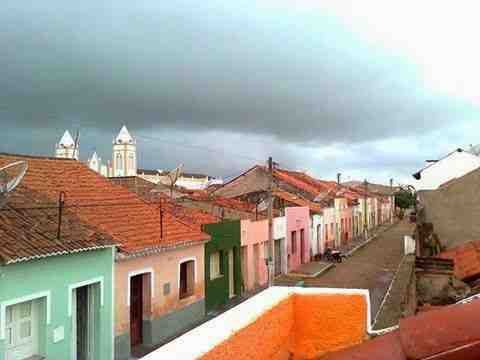
The city is a living architectural record of the past.
Between the 18th and 19th centuries, Icó was the most important cattle market in Ceará.
Located in the Cariri region, its colonisation by the Portuguese was met with fierce resistance from the Cariris Indians, the lords of the region.
Elevated to city status in 1738, a significant area of the city centre is listed by the Federal Historical Heritage.
Highlights include the Ribeira Theatre and the Town Hall and Jail, both built in 1860, and the Church of Nossa Senhora da Conceição do Monte, recently restored and declared a National Historic Monument.
Magnificent mansions with Portuguese tiles are scattered throughout the town.
A site formed by the urban perimeter planned by the metropolis in the first half of the 17th century.
An urban project with well-designed, straight streets (delimiting relatively uniform blocks), large squares and public buildings.
The nuclear site is located between the current streets: 7 de Setembro, Ilídio Sampaio and Benjamin Constant, closing on the east side with the main square.
Tourist attractions in Icó


Icó - Pontos Turisticos00:30

Icó - Vídeo da Cidade01:54

Icó - Guia de Turismo e História19:56
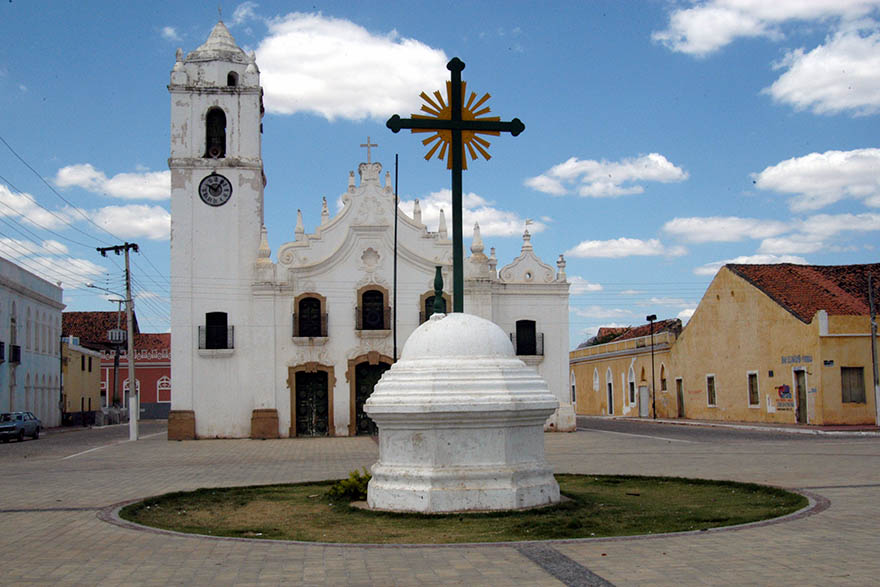
Arquitetura e História de Icó no Ceará07:58
Ribeira do Icós Theatre
Dating from 1860, it was designed by the architect Henrique Théberge, son of the doctor and historian Pedro Théberge, who financed this neoclassical work.

This is the oldest theatre in the State of Ceará.
It has two floors, with three galleries on the ground floor and upper boxes on the first floor.
Town hall and prison
Dating from the second half of the 18th century, this was one of the most secure prisons of its time. Its gates are real fortresses.
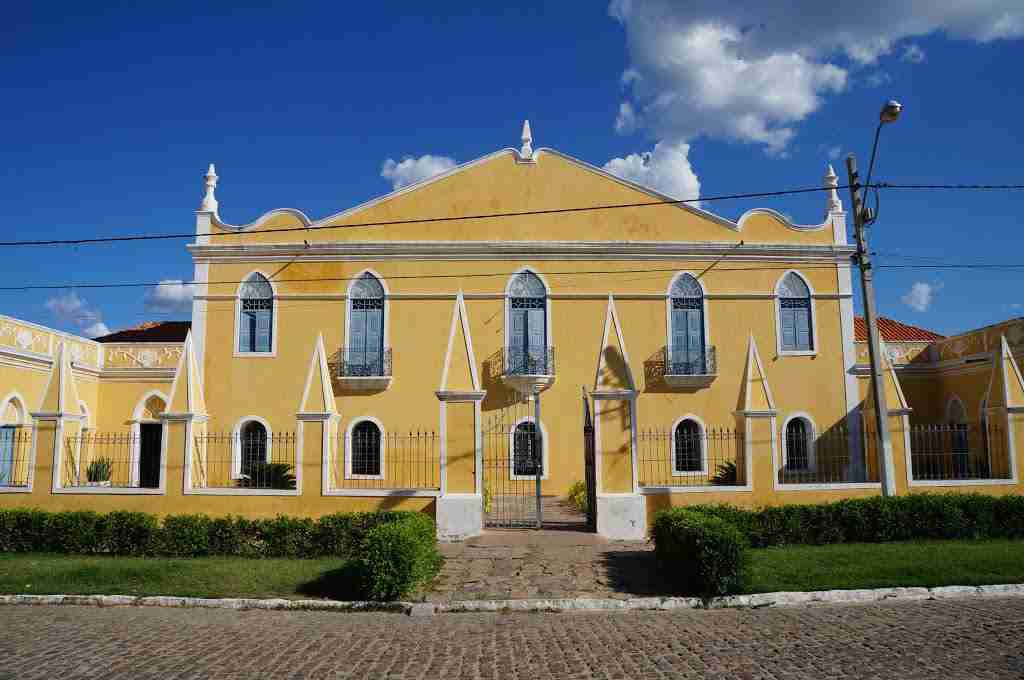
The cells have one of the most perfect security systems, with walls a metre and a half thick. The keys to the cells are unique and weigh about half a kilo each.
Inside there is a prison chapel with an image of St Dominic (patron saint of prisoners).
The building has two floors. The upper floor housed the Town Hall and the ground floor was the public prison. It is currently inactive and undergoing final restoration work.
Church of Our Lady of Expectation
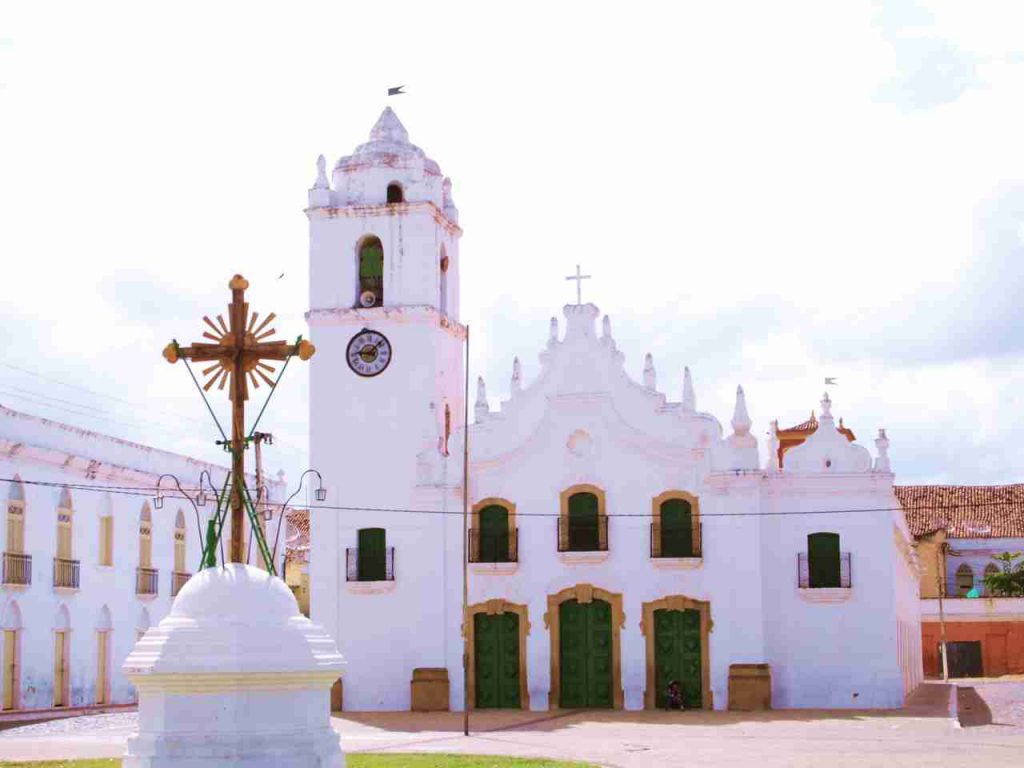
Located in Largo do Théberge, this baroque church is the parish church of the town. Next to the church, on the hill before the exit to Orós, is the Centenary Cemetery.
History of Icó in Ceará
The word Icó is of indigenous origin and means “water or river of the plantation”. It is the name of a Tapuia tribe of the Cariri-Icós nation, who settled on the banks of the Salgado (CE) and Peixe (PB) rivers.
It is also the name of a tree of the Caparidaceae family, known as the icozeiro. Before it was called this, this land had many other names: Ribeira dos Icós, Arraial Velho, Arraial Novo, Arraial de Nossa Senhora do Ó, Sítio de Nossa Senhora do Ó dos Icós, Povoação do Salgado, Icó dos Fonsecas, Icó dos Montes and finally ICÓ.
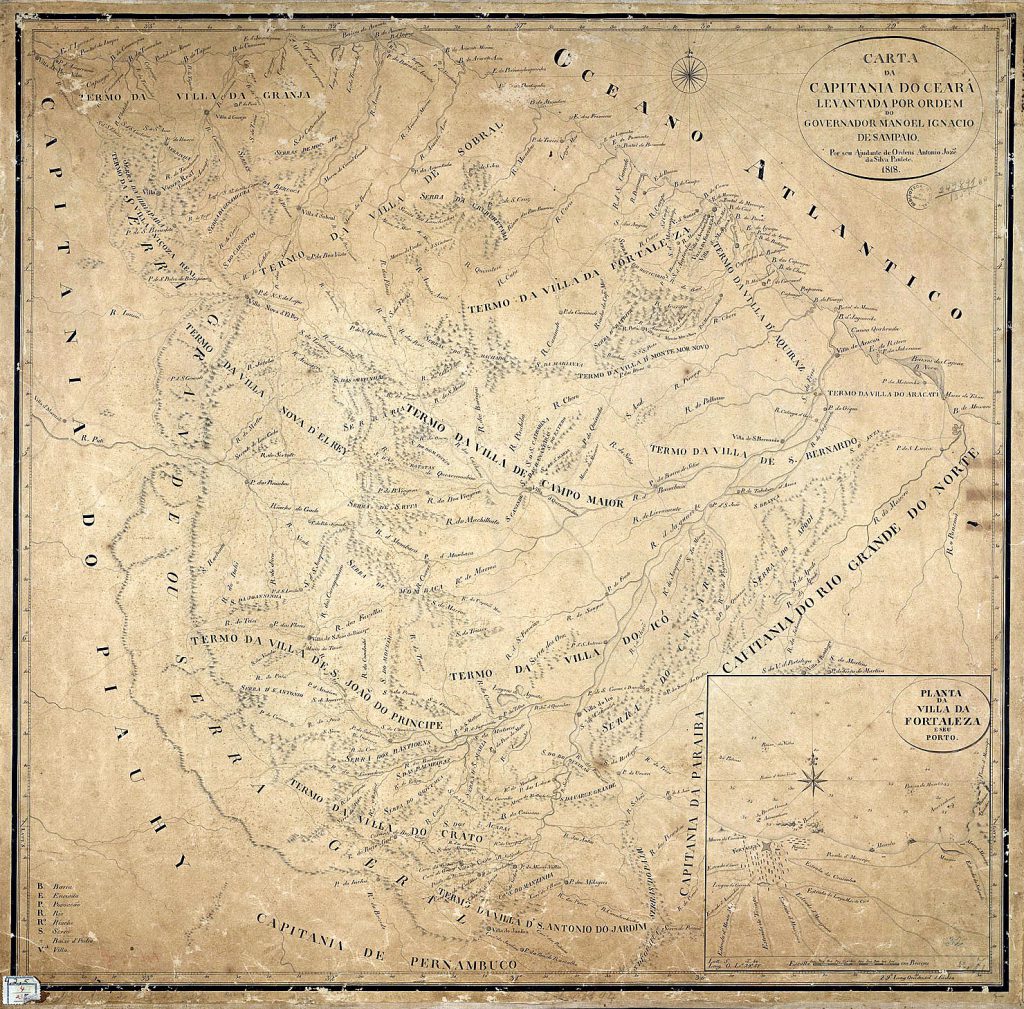
Despite the resistance of the population and the reasons that gave rise to the name in the past, it is undeniable that Icó is also known as the “Land of Laurel”.
At the beginning of the 18th century, the indigenous tribes who inhabited the region fiercely resisted the colonists.
Between the Pereiro Mountains and the vast hinterland of Cedro, Captain Major Gabriel da Silva Lago ordered the construction of a palisade to defend and protect the inhabitants of the Salgado River from Indian attacks.
A settlement grew up on the site, now known as Icó. After bloody battles between landowners, settlers and indigenous people, Father João de Matos Serra, Prefect of the Missions, achieved pacification.
With the end of the fighting, the Arraial da Ribeira dos Icós flourished and developed around the chapel of Nossa Senhora da Expectação.
The settlement and development of the region fell to the Monte and Feitosa families, who enjoyed great prestige and dominated large areas of the territory. In 1736, the arraial was elevated to the status of town under the name of Arraial da Ribeira dos Icós.
The Arraial became Vila do Icó, located in the most dynamic area of the Ceará captaincy, at the strategic crossroads of two important colonial communication routes: the Estrada Geral do Jaguaripe, connecting Ceará with Pernambuco (Aracaty-Icó-Cariri port), and the Estrada das Boiadas or dos Inhamus (connecting Ceará with Piauí and Paraíba).
Also converging on Icó was the Estrada Nova das Boiadas, which ran from Sobral through the central interior of Ceará.
In the mid-18th century, the chapel of Nossa Senhora do Ó (the town’s patron saint) was built by Francisco Monte, during which time the town experienced great economic development, fuelled by cattle ranching throughout the northeast.
The town was an active centre for the sale of standing cattle, due to its position as a collection and distribution centre in the hinterland. The fruit of this prosperity is the group of townhouses built in the historic centre.
In the 19th century, as one of the most important commercial and cultural centres in Ceará, the town was elevated to city status in 1842.
1709 – The chapel marks the beginning of the city
The town began with the construction of the chapel of Nossa Senhora da Expectação, the land for which was donated by Francisco Montes Silva in 1709, when the town grew up around the chapel.
Although historians disagree as to why the chapel was built, BARROSO (1962:144) states that half a hectare of land was donated by Francisco Montes for the burial of a daughter, and the chapel of Nossa Senhora da Expectação was built on the site.
1735 – Foundation of the city
On the 17th of October 1735, the city was founded, according to the royal letter of King John VI, which also indicated the layout of the streets, making Icó, in the coronation of Ceará, a typical city whose temples, with their ornamental Baroque façades, were unparalleled, and whose wide streets were lined with luxurious residences, with tiled townhouses, as requested by the orders from Portugal.
1824 – Icó and the Confederation of Ecuador
The important but short-lived revolutionary movement of 1824, known as the Confederation of Ecuador, was led in Ceará by Tristão Gonçalves de Alencar Araripe, and Icó played a prominent role. Dissatisfied with the excesses of the emperor, the provinces of Pernambuco, Paraíba, Rio Grande do Norte and Ceará united in a confederation, but were harshly repressed and raped.
The well-known separatist and republican movement, which began in Pernambuco, found great support among the people of Ceará and made Icó an ally against the imperial authoritarianism of Pedro I. The main leader of the confederation – Joaquim do Amor Divino Rabelo, known as Frei Caneca – was shot in Recife.
In Icó, those involved in the movement were severely punished and the streets of the city were washed in blood. A provisional municipal government was set up, representing the imperial government, which appointed the so-called Matuta Commission to punish those involved in the movement.
Thus, Icó watched with sadness as those who fought against the arbitrary rule of the central government and for better economic conditions for the poorest sections of the population were shot in a public square.
1883 – 2013 – Icó, 171 years of political emancipation
On 25 October 2015, the city of Icó celebrated 173 years of political emancipation. But since 1682 there have been records of those who fought with the true owners of the land, the indigenous people of the Icós family, the great Tupi nation belonging to the Cariris Confederation. Icó doesn’t know how old it is.
Official history is always fragile because it is told by the ruling class, which always wants to reproduce itself as heroic. After being a tribe, around 1735 Icó became a village and then a town. In other words, the town has had 173 years of struggle, glory and resistance.
The years of a municipality are counted from its emancipation. However, Icó is one of the oldest cities in Ceará. Not to mention one of the most beautiful in Ceará and Brazil.
The architectural and urban complex of Icó
The Architectural and Urban Complex of Icó, Ceará, contains some of the most important buildings and urban layout imposed by the Portuguese Crown in the 18th century.
The architectural and urban complex of Icó, listed by IPHAN in 1998, is considered the best example of traditional architecture in Ceará, including popular architecture.

This heritage is concentrated in its main streets, where the most important buildings are located, as well as in the urban layout imposed by the rules of the Portuguese Crown in the 18th century.
Like all the traditional architecture of the former province of Ceará, that of Icó is characterised by simplicity and sobriety. The city preserves – with great integrity – a precious architectural collection, and the area designated for protection includes about 320 buildings.
The city was the first to receive this type of listing – urban ensembles protected by Iphan – and one of its greatest expressions is the historic centre, which dates back to the colonial period.

Founded mainly by Portuguese and French settlers, Icó inherited a rich Baroque architecture, with characteristics typical of the Northeast region and French neoclassical lines.
During the gold mining and jerky boom of the 18th and 19th centuries, Icó became an important trading centre in the interior of Ceará.
Many buildings remain from this period, true documents of the occupation of the northeastern hinterland by cattle ranching.
Even in the oldest churches, there is no complex and sophisticated carving or stonework.

The only building in the city with a more learned design is the Ribeira dos Icós Theatre, a neoclassical building.
Some of the townhouses of the city, located in the oldest part of Rua Ilídio Sampaio, have façades with more elaborate decorative elements, such as railings, fences and Portuguese tiles.
Also noteworthy is the sculptural work on the buildings, which were built or rebuilt between the late 19th and early 20th centuries.

Note the ability of this architecture to adapt the basic repertoire of colonial Brazilian architecture to the harsh environment and scarcity of the Sertão.
As the centre of the cattle route, Icó became the most important trading post in the interior of Ceará.
Churches, a prison, a market and houses with beautiful Portuguese tiles date from this period.
Its development declined with the decline in exports of livestock products, due to successive droughts and the entry into the national market of cattle reared in the pastures of southern and southeastern Brazil.

The political and economic weakness contributed to the preservation of much of the city’s architectural and urban heritage. The new urban expansion area was created to the east of the Salgado River, sparing the historic centre from further alterations.
One of its peculiarities is the characteristic of colonial urbanism in the region: the construction of the city, although dependent, with its back to the Salgado River, a tributary of the Jaguaribe River. Most of its valuable architectural heritage has been preserved, despite the degradation of the landscape, a testimony to the occupation of the northeastern interior.
Tourist guide to Icó in Ceará and the Northeast
This post is also on:
![]() Português
Português ![]() English
English ![]() Deutsch
Deutsch ![]() Español
Español ![]() Français
Français



















